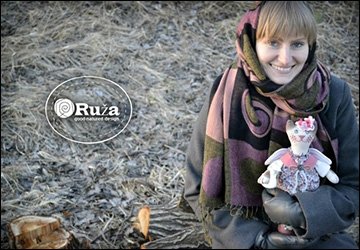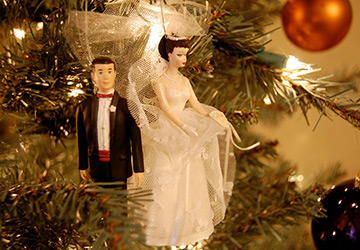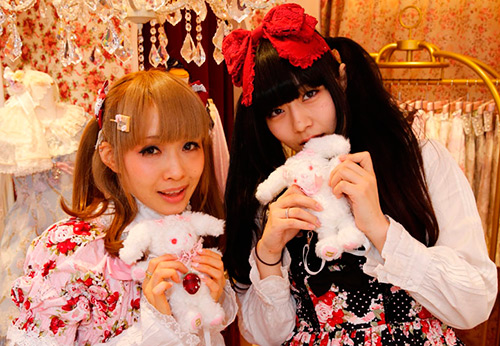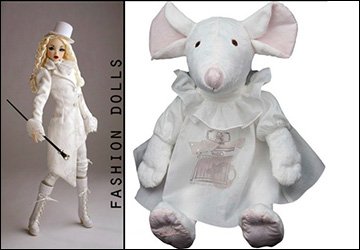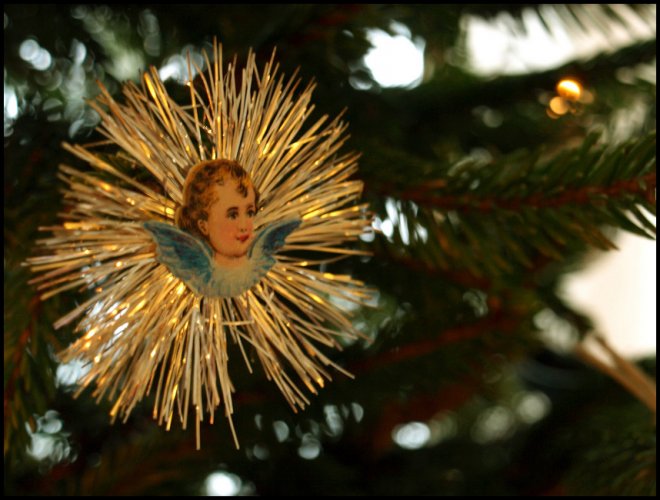Interview
Olga Kotova: a doll is such a creature that comes from somewhere
There is very little time left before the New Year holidays. New Year is always a fairy tale. A time when not only children, but also adults believe in miracles. And the New Year is also the time to give magical gifts.
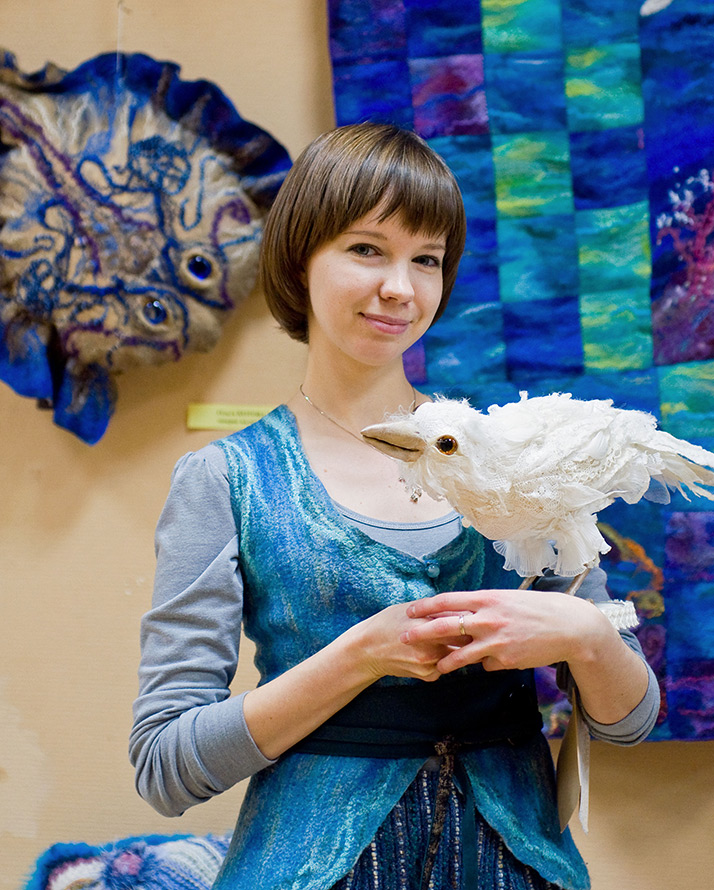
Olga Kotova
On the eve of the New Year and Christmas, mystyle.decorexpro.com/en/ magazine also prepared a small gift for its readers - an opportunity to plunge into the world of toys: learn about how author dolls are created, what materials they are made of, where ideas come from.
Olga Kotova, a master who creates toys and unusual things, for example, backpacks with wings in the shape of an owl or a dragon, will become our guide to the world of toys. Among her toys are not only full of various animals - cats, owls, fish, but it is quite possible to find heroes from fairy tales - for example, a caterpillar from "Alice in Wonderland».
The main theme of Olga Kotova's works is animals, the material with which she most often works is felt. Felt is a very cozy and warm material, definitely what you need in cold winters.
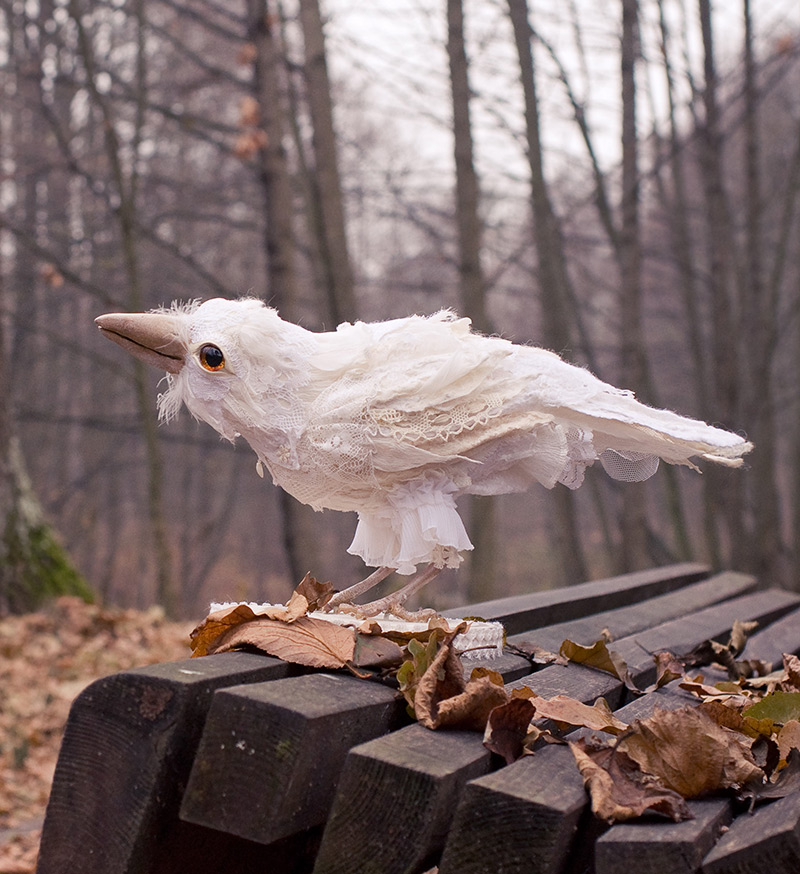
White crow
There are a lot of animals among your works (cats, owls and even a caterpillar from "Alice in Wonderland"). What is the reason for this choice? Have you ever made human dolls?
The thing is, I really started with human images. They were wizards, elves, beauties in historical costumes, in general, all those creatures with which all puppeteers usually begin.
However, at first, the proportions began to distort, the images became more and more stylized, and then the dolls completely acquired a zoomorphic appearance - and I realized that, perhaps, I found my own in this. They are almost like people, these animals - pensive, curious, cunning, wise, dreaming - however, the animal body, it seems to me, allows you to more accurately express the image through allegory.
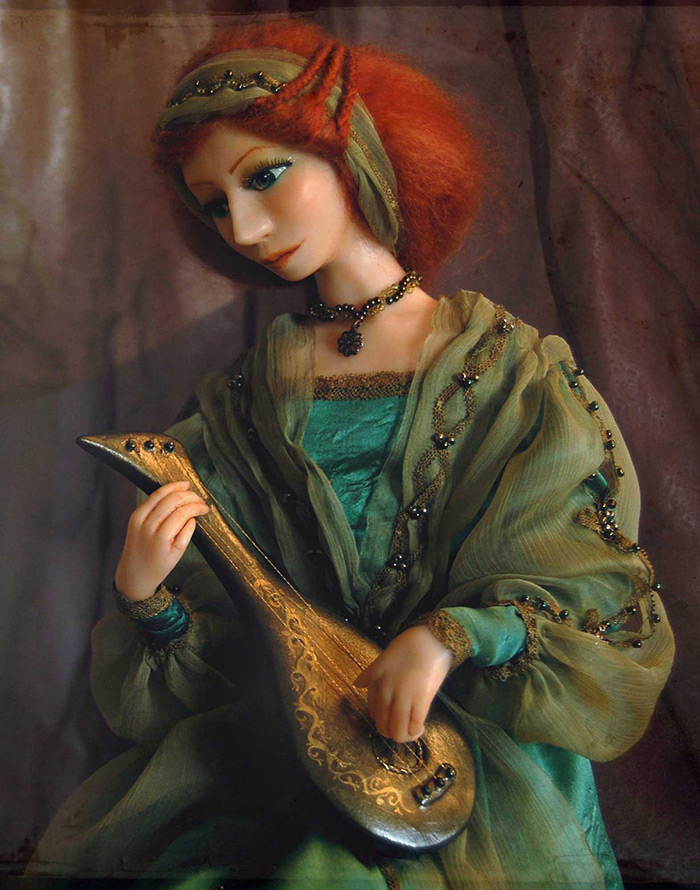
One of the first dolls. Title of the work "Green Sleeves"
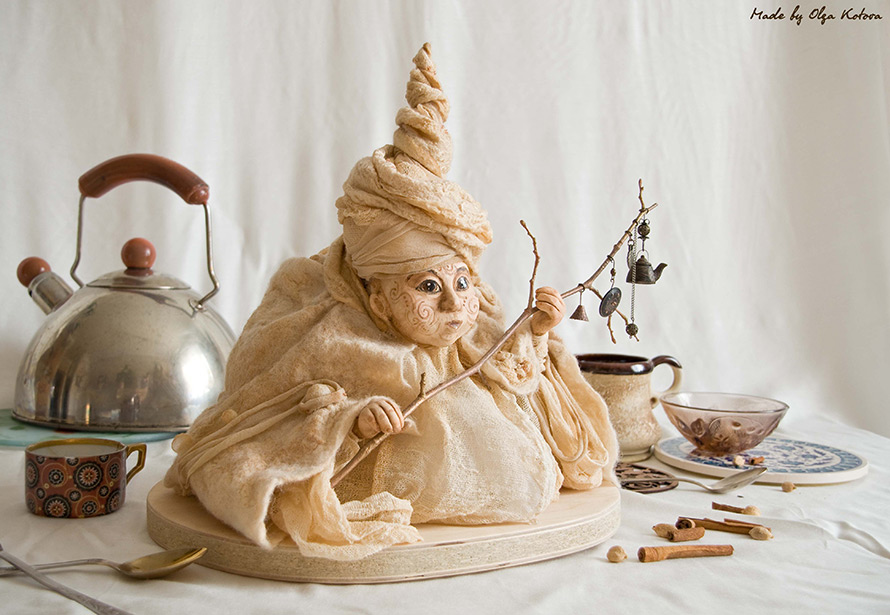
The spirit of the teapot, when human proportions gradually began to distort
In addition to designer dolls, you also make blankets, backpacks. You had very unusual backpacks, for example, with owl wings, octopus, stingray. How did the idea of creating such backpacks come about?
In general, I do even more felt work than dolls. Dolls are more difficult, they take more time to be born. But felt allows you to quickly, practically in a day or two, embody the idea that has appeared.
As for the creative backpacks, this is entirely my husband's idea. No, he is not an artist, he is a lawyer working in a "normal" job, but seething with very original ideas. Fortunately, he found me, and now he has ideas, and I have a plan to implement them (smiles).
He has long wanted to create wings that will not just be a decoration on the back, but also have a utilitarian function. Felt is the ideal material for such a romantic and unusual backpack. Well, then the idea began to develop, dragon wings appeared, an octopus clasping your shoulders with tentacles, a stingray, merrily flapping its wings when walking ...
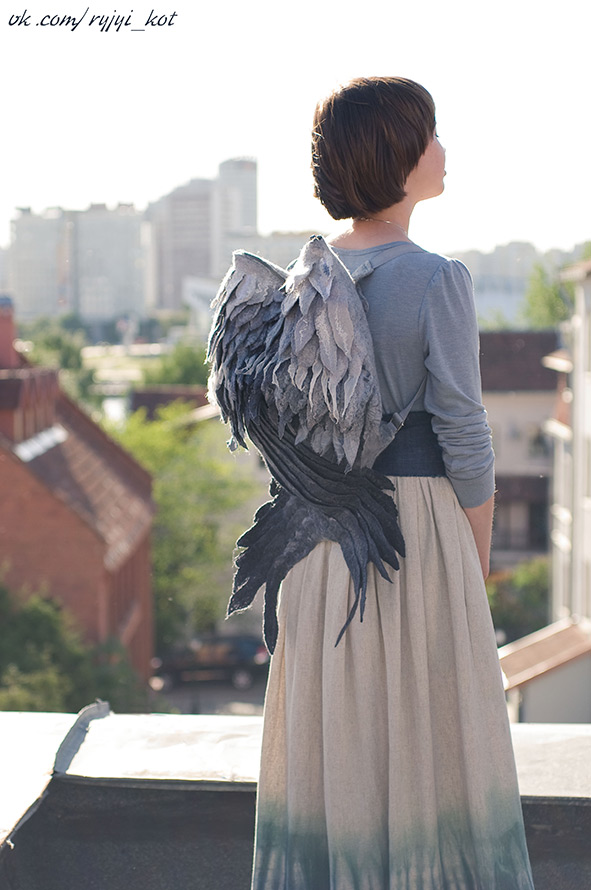
Backpack-wings
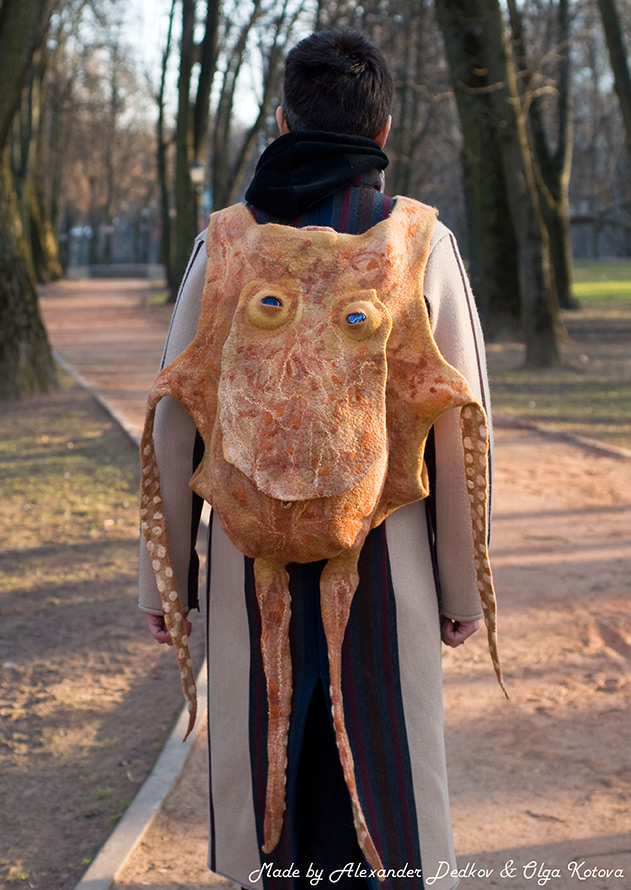
Octopus backpack
By the way, the idea of a felt blanket as such also belongs to Sasha (her husband). We met after he ordered the first blanket from me on the site "Fair of Masters". I came up with a large felt canvas to break into separate squares to make it easier to roll, draw your own plot in each square, and then connect them on a sewing machine.
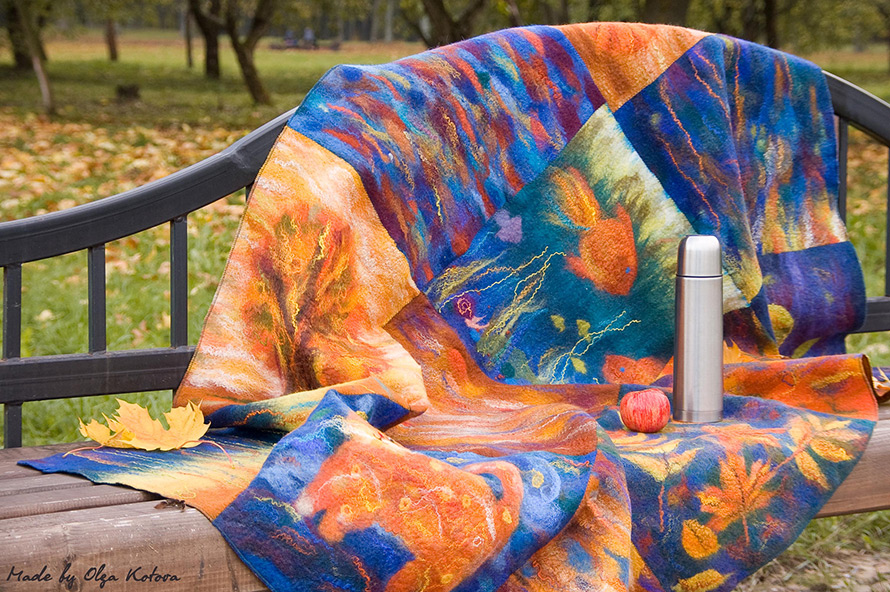
The first custom-made blanket for the husband-to-be
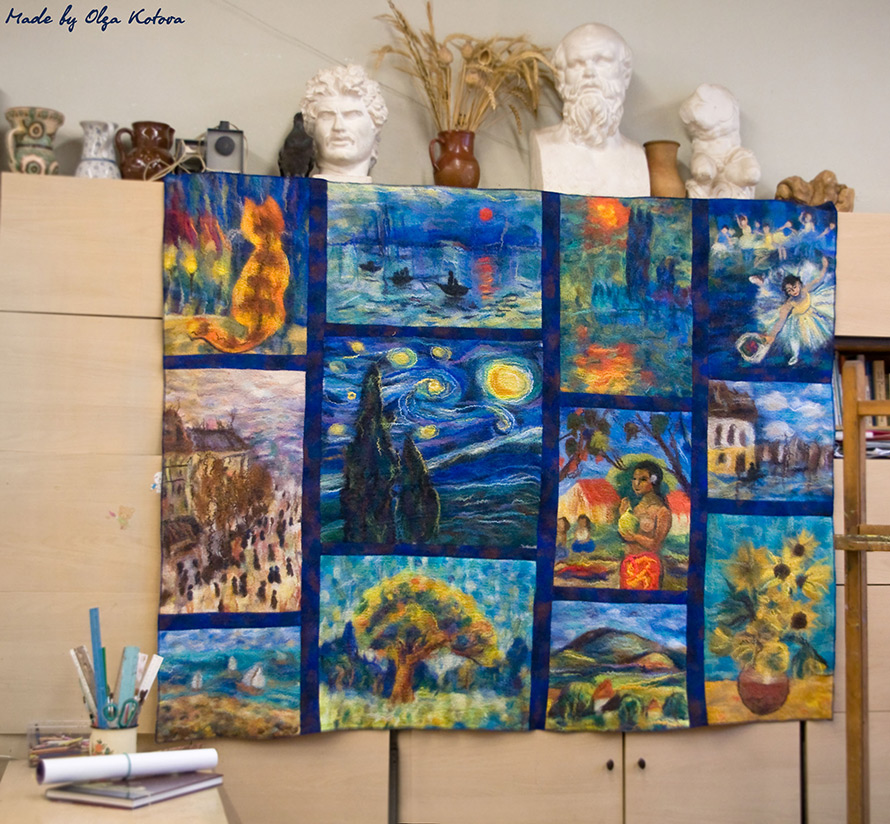
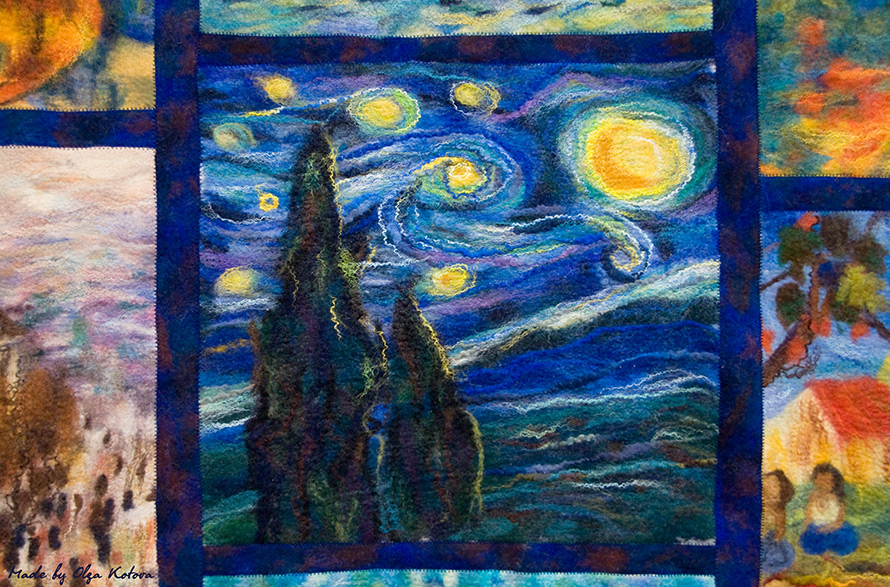
Impression Plaid
Do all of your products exist in a single version? Or do you also make multiple copies? Can you repeat a thing if there is a demand for it?
It depends on what it is about. I never copy dolls, this is such a creature that comes from somewhere, is born, and there can be no other such thing.You can try to repeat, purely technically doing all the same operations, but it will be such a shell, without a spark inside.
Therefore, I do not create images to order, only what comes into my head myself. Moreover, I sculpt dolls from self-hardening plastic, and not cast from porcelain, which further complicates the possibility of exact repetition.
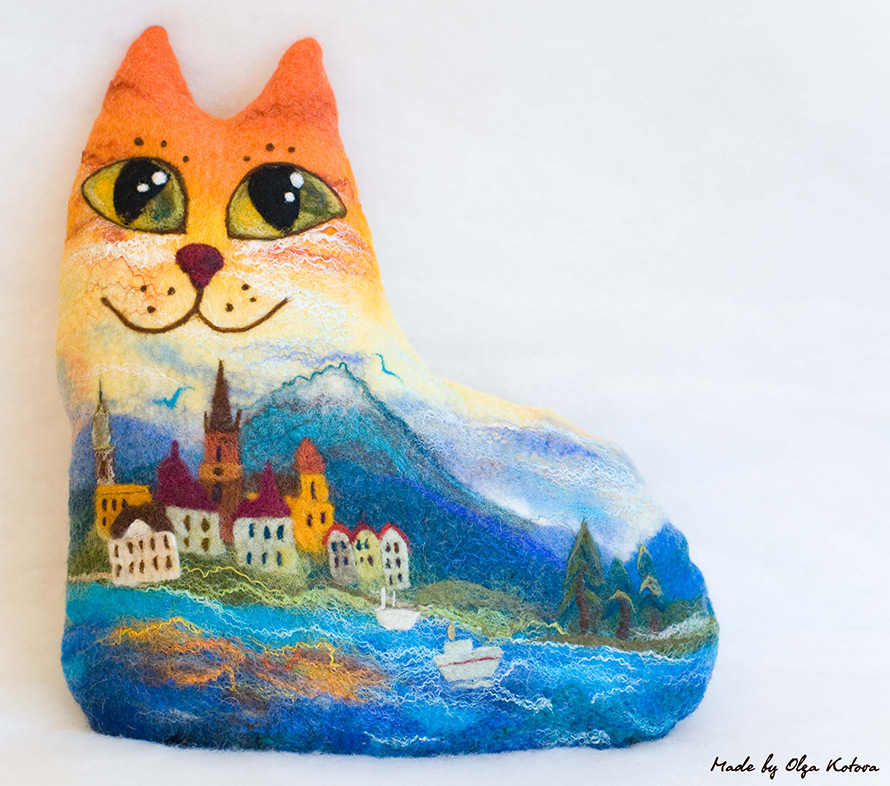
Pillow-cat
Felt products, on the other hand, are a little simpler. Of course, it is also impossible to repeat exactly here, because there are no templates and schemes. But if there are customers for some work, I am happy to repeat, moreover, with each subsequent repetition, I improve something, add some zest.
For example, my "trick" is felt pillows in the form of various animals: cats, fish, owls. The first pillow cat was created in 2010 and suddenly became popular. Cats of this shape (I play them on a pattern, so the shape is easy to repeat) I have created in five years ... I don’t know how many, about 50, I probably changed the color, pattern each time, different landscapes, cities appeared on the cats ...
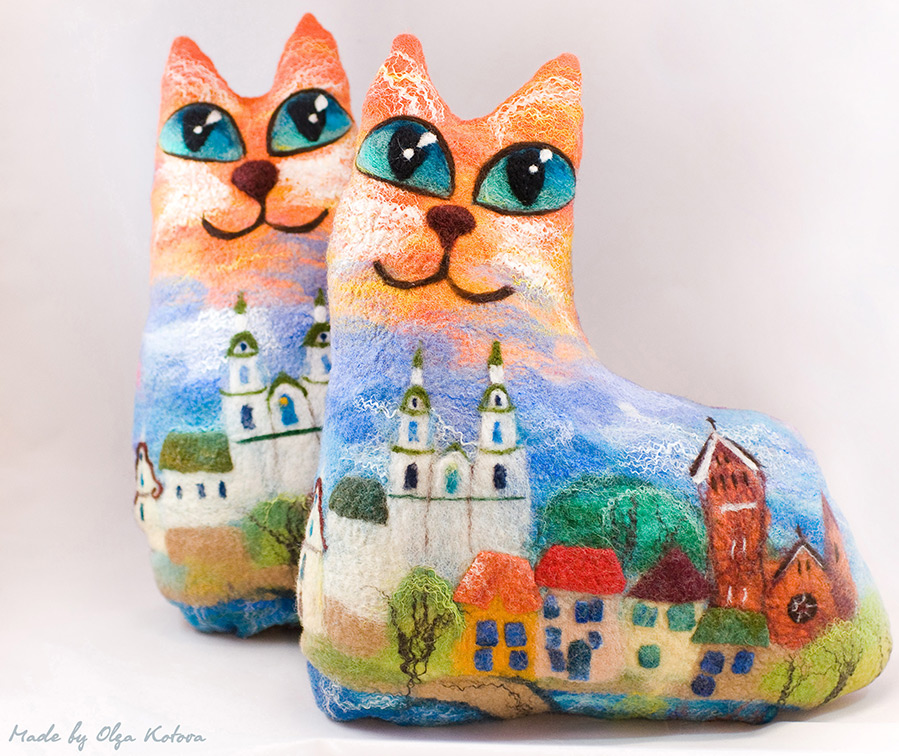
cat pillows
You have a lot of felt products. Tell us about this material. What are the features of working with felt?
Felt is a unique material, you can make ... almost anything from it! You can use a toy or a doll, you can use a warm accessory, jewelry, clothes, shoes, a piece of furniture, a pillow and a blanket, even a house (Mongolian yurts, for example, are completely covered with felt)! There is no such material anymore (smiles).
<> At the same time, it is environmentally friendly, warm, durable, very practical. Sheep wool is cut from sheep, combed and dyed in factories, and the master rolls it dry (with the help of a special serrated needle) or wet (wool is poured with hot soapy water and rubs, rolls, rolls for a long time, until the individual wool is knotted together with a thick piece of felt).
Dry felting is a calmer activity for the diligent and patient, with the help of it you can create voluminous toys. I like wet felting more - there is more room for imagination, more interesting techniques and types of products. But this is also a more physically difficult occupation, sometimes you cannot do without male help (smiles).
This method creates hats, mittens, all my pillows and blankets, and so on. You can use thousands of colors and shades, mixing them with each other, practically creating picturesque canvases with wool, you can take only natural colors and create art objects for an eco-interior ... everything that your imagination is capable of.
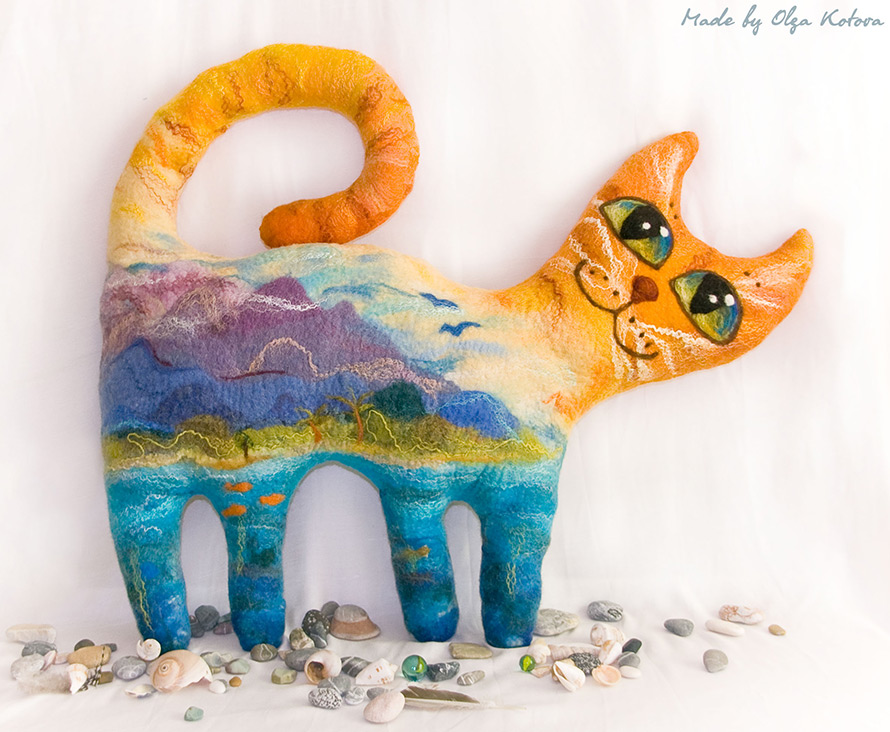
Pillow-cat
How a doll is made. Tell us a little about the technical side - the stages of creating a doll.
In fact, there is no universal recipe for how to create a doll. Each master develops his own technology, depending on the conceived image. General principles: frame, plastic molding, clothing. First, of course, comes the idea and sketch. Moreover, the sketch is not only as an image, but also thinking through the technology and stages of creation.
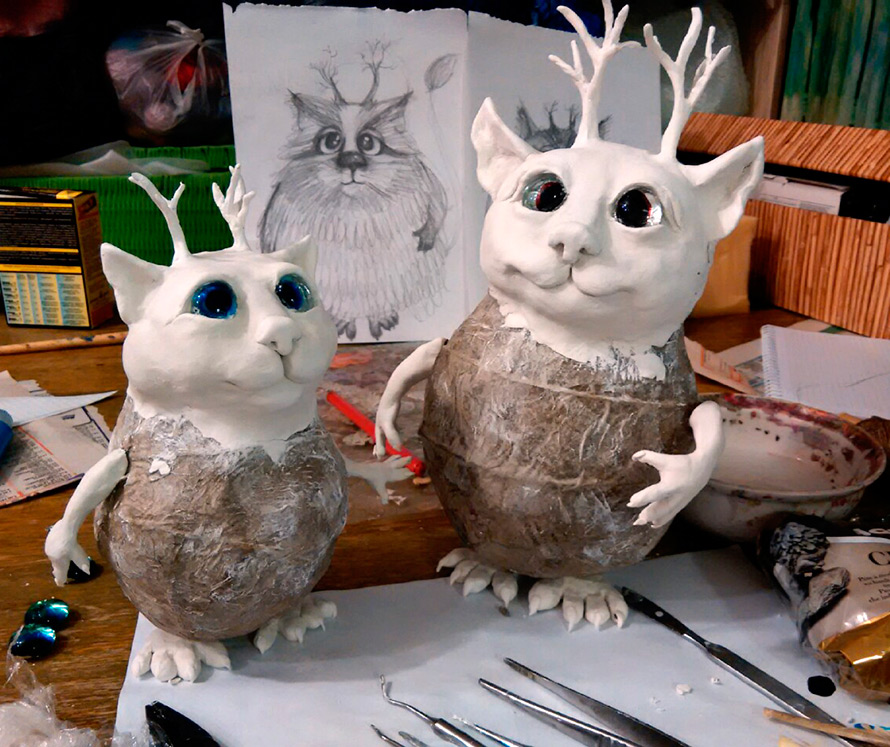
Doll making process
My images are more rounded, like that, with bellows (smiles). Therefore, a papier-mâché base is more suitable here, so that the body inside is hollow and does not weigh much, but at the same time it is solid so that plastic can be further glued onto it.
From the materials at hand (plasticine, foam balls) I create the most approximate shape in which the future body of the doll is slightly guessed. Layer by layer I put the paper, gluing it with PVA, drying it, so 9-10 layers of paper appear on the base. When dry, it becomes hard.
I cut the papier-mâché, take out the base, and glue the papier-mâché again. We get a blank "carcass" of hardened paper, hollow and light. I glue the limb wire frames, then start an interesting plastic sculpting process.
I use self-hardening plastic, I love Paperclay the most for its lightness and versatility. At this stage, glass eyes are inserted into the future face, ready-made, or made from aquarium glass, painted on the flat side.The face, arms, legs are molded, this is a rather exciting process, when Being is born out of chaos under your hands (smiles).
Then the plastic dries, polishes, paints with acrylic. After that comes the most interesting stage - "clothes", in my case - skin, fur or feathers. Most often I make it out of felt knitted together with silk and fibers.
Felt, silk fabrics, if necessary, are tinted with batik paints. They are then either cut and glued row by row, imitating fur or feathers, or gathered and attached to the carcass like leather. It all depends on the image that I create: you can add beads and beads, paper, twigs, any materials to make the doll expressive.
One doll takes at least seven days (but usually more - about two to three weeks) and quite a lot of different materials.
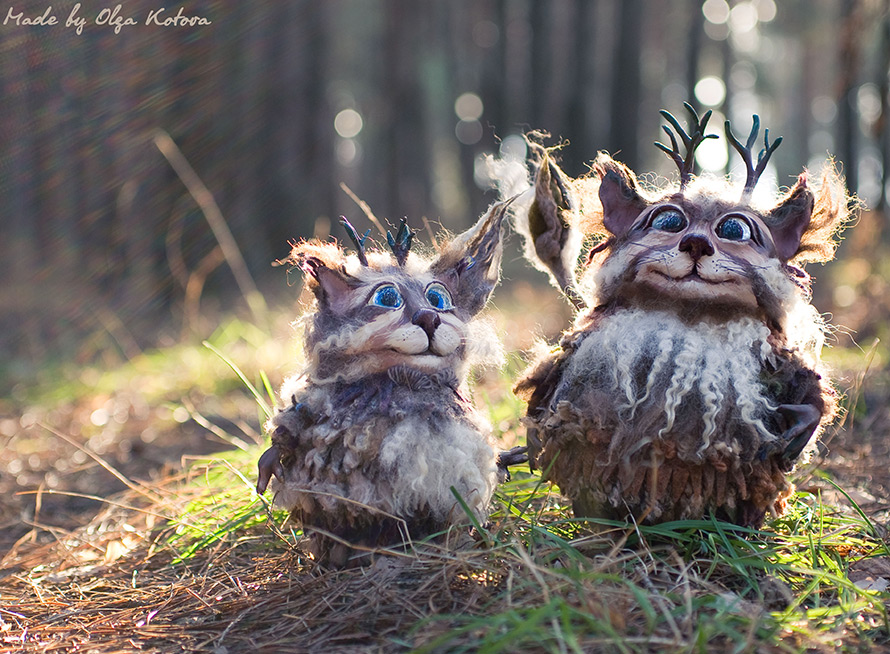
Forest dwellers
Have you dreamed of making toys as a child?
I didn’t dream, I did them (smiles). From elementary school I went to the circle of soft toys and sewed, sewed ... They stopped giving me purchased toys, and began to give fur and eyes! True, already when I was seriously engaged in creative work, I realized that I had probably “changed” - I am not attracted to such popular and diverse Teddy bears and textile dolls at all (smiles).
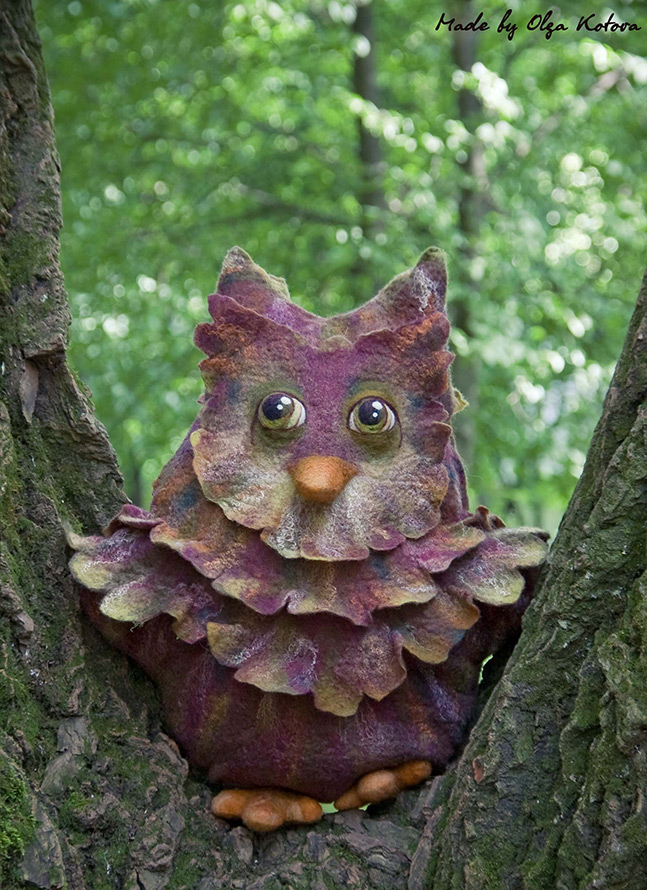
Owl pillow
Where / from whom did you learn the art of doll and felt? Are you continuing to learn now in the process? What / who is your inspiration?
I graduated from the Belarusian State Pedagogical University with a degree in artist-teacher (of course, everything started earlier, as I said, with a circle of soft toys, art studios, then schools with an artistic bias).
At the university she received general artistic training, got sick with dolls, defended her thesis project on the theme of author's dolls. Then she learned to play (at a master class in the Wool Closet workshop), and began to combine these two types of creativity.
Then I realized that felt and dolls are limitless and you can learn them all your life (smiles). There are a lot of techniques, materials, tricks, it seems that I seem to have learned everything, but no, something else is being revealed. In fact, with each work I grow and develop a little, I jump a little higher (sometimes a little higher than my head (smiles)).
And inspiration doesn't come from anywhere. It is here at work and sits. Until you start to draw sketches, do not pick up the material, do not start work, there will be no inspiration.
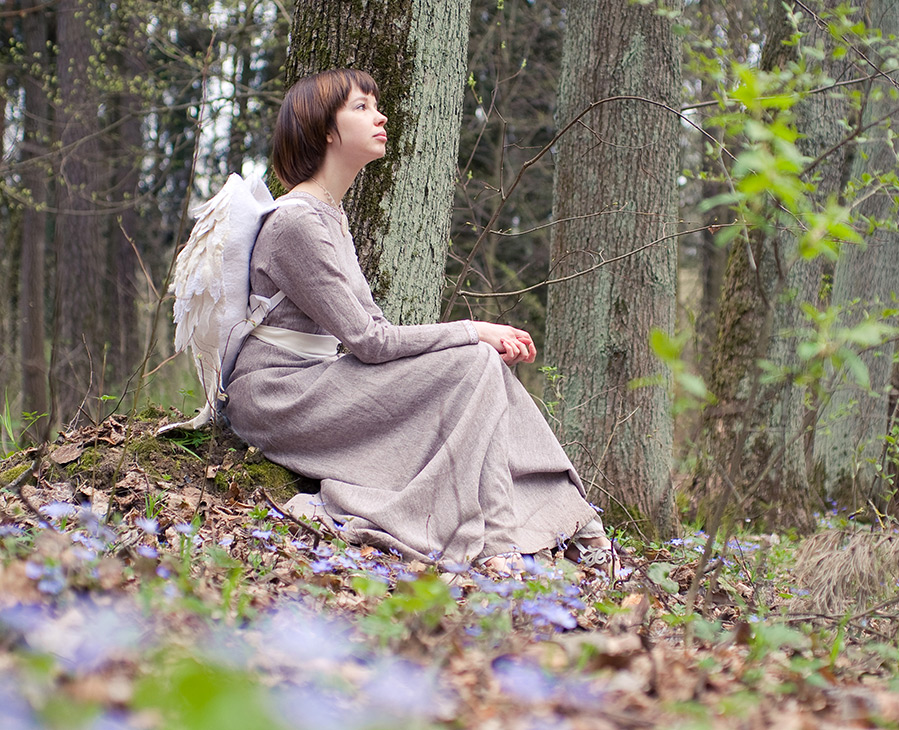
Olga Kotova
Do you have a favorite work? Which? Is it easy to part with them? Did you have it so that having done the work, you understood that you would not sell it?
I love all the works while I do them (smiles). Yes, something turns out better, more beloved, something is simply born easily, as if it already existed, and I just spent and embodied in this world. But I do not regard my creations as a part of myself that will be with me forever. Still, it's just work, work, the same as work in other professions.
Therefore, no matter how beautiful the product turns out, no matter how it looks at me with blue eyes, no, I am more happy when it is finally sold and finds its owner than it is with me.
In general, I work for the sake of the process (smiles). I get pleasure from touching good material, from the process of creating my works, admiring the finished product and letting it go. I am left with the experience of creation and photography as a keepsake (smiles).
Comments and Reviews
Add a comment
Rating news
Shades of clothing that make women look younger
What shades of hair make women younger: rules and photos
Funny wedding dresses - photos and ideas
12 most expensive down jackets for the winter
How to look 25 at 40: tips from supermodels
Beautiful schoolgirls
Anti-aging haircuts and hairstyles for women
Fashionable skirts for autumn and winter
Fashionable women's trousers for the cold season
Fashionable and stylish sandals for summer 2024
Spring-summer 2024
 Fashionable dresses and tops with thin spaghetti straps
Fashionable dresses and tops with thin spaghetti straps
 Bandana tops: how to wear stylishly and beautifully
Bandana tops: how to wear stylishly and beautifully
 How to put together the perfect men's wardrobe for the summer
How to put together the perfect men's wardrobe for the summer
 Fashionable shorts for spring-summer 2024
Fashionable shorts for spring-summer 2024
 Fashionable skirts for spring-summer 2024: a guide to online shopping
Fashionable skirts for spring-summer 2024: a guide to online shopping
 The most fashionable dresses spring-summer 2024: styles and colors
The most fashionable dresses spring-summer 2024: styles and colors
 Fashionable total look 2024: ideas of images and trends
Fashionable total look 2024: ideas of images and trends

